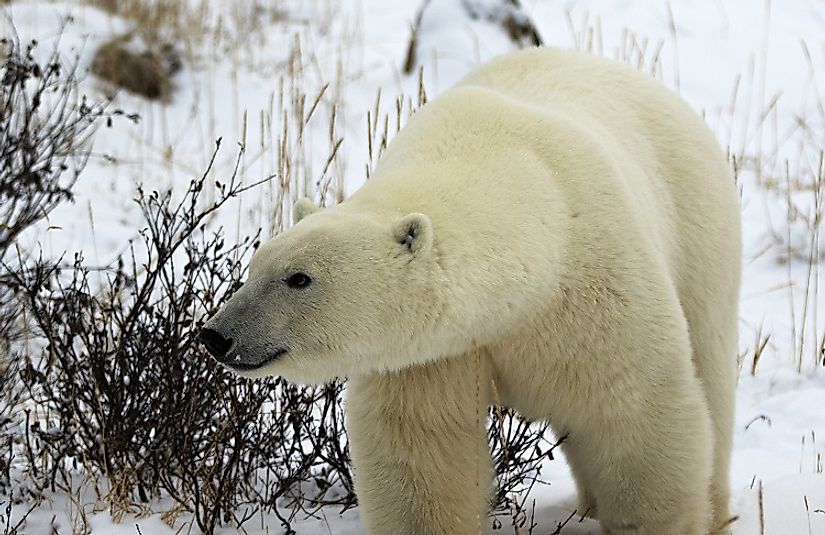Polar Bear Provincial Park

5. No Roads, No Amenities
The Polar Bear Provincial Park is a remote wilderness park, sprawling over an area of nearly 24,000 square kilometers in the Hudson Bay lowlands of Canada’s Ontario province. More specifically, the park is located on the western shores of the James Bay where the bay unites with the Hudson Bay. The park was established in 1970 to protect its fragile tundra habitat which is home to the International Union for the Coservation of Nature-classified "vulnerable" Polar bears, and has also been bestowed with the prestigious title of Wetland of International Importance by the Ramsar Convention. The park is currently managed by the authorities of Ontario Parks. Interestingly, the Polar Bear Provincial Park is so remote that it can be accessed only by air. No permanent tourist facilities are allowed here and thus the park has no permanent constructions within its territory. Admission to the park is also highly restricted, and only those with a special permit are allowed to enter.
4. Roughing It
Visitors to the Polar Bear Provincial Park are always advised to prepare themselves to face some really tough challenges while touring the park. Since no permanent structures are allowed, tee-pees or canvas tents serve as the only shelter for those visiting the park. The shelters are exposed to nature’s elements including extremely strong winds which might blow away the tents if not properly fitted in place. The visitors are also at the mercy of the wildlife of the region with low voltage electric fences guarding their tents as the only barricade between them and the wildlife of the region. The visitors are also asked to carry an extra weeks’ supplies as poor weather conditions might strand them at the park for several days. Wildlife viewing, fishing, canoeing, hiking, and boating are some of the activities which can be enjoyed by tourists visiting the Polar Bear Provincial Park.
3. Polar Bear Migration
The Polar Bear Provincial Park, Canada, hosts one of the southernmost populations of polar bears in the world. The polar bears of the park exhibit a typical migration movement every fall when the first signs of snowfall appear. The animals gather near the Hudson Bay area, waiting for the sea ice to form. As the bay starts freezing, the polar bears migrate north towards the frozen northern parts of the sea where they can hunt for the seals which form an important part of their diet. Again in summer, as the ice melts in the Hudson Bay, the bears are forced ashore, surviving on their fat reserves till it is winter again.
2. Habitat and Biodiversity
The Polar Bear Provincial Park encompasses an area of low-lying tundra with a subarctic habitat. Mosses and lichens cover large parts of the landscape of this park. The shoreline areas of the park are often flooded in summer with the establishment of a wetland ecosystem comprising of peat marshes and bogs. As one travels southwards from the shores of the bay, the vegetation cover gradually transforms from mosses and lichens to stunted shrubs of willow, and spruce, to taller plants like Lapland rhododendrons and mountain cranberry. The fauna of the Polar Bear Provincial Park includes a population of around 200 polar bears and several other species of mammals like the moose, caribou, snow fox, and martens. Several species of migratory birds inhabit the wetlands of the park in spring and summer.
1. Ongoing Threats to Wildlife
Although there is very little human intervention in the Polar Bear Provincial Park, the worst threat to this park comes from global warming induced climate change. With world temperatures rising, the park now experiences warmer summers and shorter, less frigid winters. The Hudson Bay also freezes later and thaws earlier. All these events are adversely impacting the life cycle of Arctic species adapted to survive in the cold habitats. For example, polar bears now have to survive longer periods of starving as their seal hunting grounds are only accessible when the Hudson Bay freezes in winter. This has led to a 22% drop in polar bear numbers over the last 30 years.







